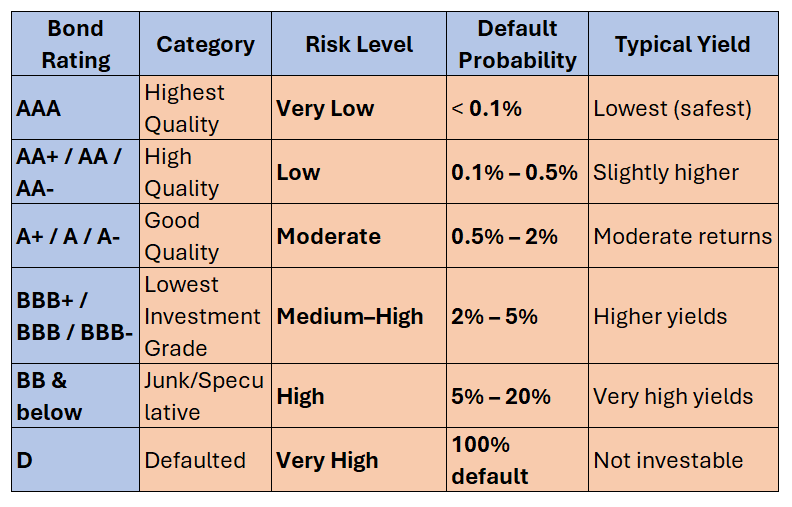
Mutual funds are now one of the key investment vehicles. As of late 2025, the Indian mutual fund industry has approximately 54 million unique active investors and over 25.60 crore (256 million) folios. The total assets under management (AUM) reached a record high of approximately ₹79.88 trillion (around USD 958 billion).
There are more than 1500 different funds/schemes available in the market, which makes the investor ask “How to Invest in a Mutual Fund” and “Which One should I pick”?
So, let’s learn some basic things about mutual funds, which will help you differentiate between funds so you can make better investment decisions.
Table of Contents
What Is a Mutual Fund?
Suppose you went to the market with ₹500 to buy fruits, an apple was ₹100/kg, a mango was ₹200/kg, and a banana was ₹100/dozen. You first thought of buying just banana for ₹500, but then you realised that if you buy 5 dozen for ₹500, there is a high chance that you won’t be able to finish all of them before they get overripe or spoil.
So, you made a clever choice and brought two dozen bananas, one kg of apples, and mangoes costing ₹500. This way, you have a good number of bananas and other fruits that might take some time to spoil. This was how you diversified your purchases.
This is exactly what happens when you invest in mutual funds: mutual funds make a basket, and in that basket, there are multiple stocks, so when you invest, your amount gets proportionally divided between those stocks.
A mutual fund is a pooled investment vehicle where money from many investors is combined and managed by a professional fund manager, who invests it in a diversified portfolio of stocks, bonds, or other assets.
Definiton
Different Types of Mutual Funds
The most challenging part of investing in a mutual fund is not knowing what type of mutual fund it is. A mutual fund scheme will read like “XYZ flexi-cap equity growth opportunity fund”, and you will be like, I have zero idea about every word it mentions, and then you will be like. If I don’t understand what this fund is, how am I supposed to invest in it?
Don’t worry, after reading this particular article, you will be able to differentiate between funds and will have an understanding of where they will invest your money.
Let’s divide the mutual funds according to broader categories based on structure, asset class and investing style.
By Structure
Structure-based mutual funds are based on how and when an investor can buy or sell units.
They are broadly categorised into three categories;
- Open-Ended Funds
- Closed-Ended Funds
- Interval Funds
Open-Ended Funds
Open-ended funds allow investors to buy/sell at any point in time; there is no maturity date, and the fund continuously issues and redeems the units at the current NAV. Open-ended funds are the most flexible and common type.
Closed-Ended Funds
Close-ended funds can only be bought during the NFO period, and they remain locked in until maturity. After launch, they trade on stock exchanges like shares, and prices may differ from the NAV depending on supply and demand.
Interval Funds
Interval funds combine the attributes of both closed and open-ended funds. They open for purchase or redemption only during specific intervals (e.g., every 6 months). These are suitable for investors with moderate liquidity needs.
By Asset Class
Asset-based mutual funds are categorised by the asset class they invest in. Major asset classes are equity, debt, commodity, and international funds.
Let’s subcategorise them.
Equity Mutual Funds
Equity mutual funds invest your funds in a company’s equity; it is like buying shares of a company. Since you can’t buy shares in fractions, mutual funds help you invest in different companies with a small amount.
It is further categorised by market capitalisation, investment style, and flexibility.
Large-Cap Funds
Large-cap funds invest in stable companies with a large market cap( For example, in India, if a company has a market cap of greater than ₹20,000 Crore). They offer steady growth and potentially lower volatility, making them ideal for long-term wealth building with moderate risk.
Mid-Cap Funds
Mid-cap (stocks usually have a market cap of ₹5,000 crore and ₹20,000 crore) funds invest in mid-sized companies with high growth potential. They carry more risk than large-cap funds but can deliver higher long-term returns.
Small-Cap Funds
Small-cap (stocks usually have a market cap of less than ₹5000) funds invest in small, emerging companies. They offer high potential return but come with significant volatility, and risk suitable for aggressive long-term investors.
Flexi-Cap Funds
Flexi-cap funds have very few restrictions on allocation. The fund manager can freely change allocations between large, mid, and small caps depending on market opportunities, offering high flexibility and diversification.
Multi-Cap Funds
As the name suggests, it invests in all three market caps (large, mid, and small). Unlike a flexi-cap, it doesn’t move entirely to one category. This ensures a balanced exposure to all market segments.
Focused Funds
Focused funds invest in a maximum of 30 stocks. With concentrated bets, they aim for higher returns but carry greater risk due to limited diversification.
Value Funds
Value funds invest in companies that the manager feels are undervalued, undervalued in the sense that the stock is trading below its intrinsic value. The goal is long-term appreciation when the market eventually recognises their true worth.
Contra Funds
Contra funds follow a contrarian strategy—buying stocks that are currently out of favour. They aim to profit when market sentiment reverses. They carry high risk, but if executed well, can deliver amazing returns.
Opportunities Funds
Opportunities funds invest wherever the best opportunities arise, whether across sectors, themes, or market caps. This makes them dynamic and flexible, shifting with market cycles. Again, it is high risk and high-reward stratergy.
Sectoral / Thematic Funds
Sector-based funds invest in specific sectors such as IT, Pharma, Banking, EV, or Defence- high-risk, high-reward funds since they rely on the performance of one industry or theme. Choose this only if you can carry heavy risk in your portfolio.
ELSS (Equity Linked Savings Scheme)
These funds are best for those who want to save income taxes through investment, as ELSS funds offer tax deductions and come with a lock-in of 3 years. They invest primarily in equities and are ideal for long-term wealth creation plus tax saving.

Debt Mutual Funds
Debt mutual funds invest your money in debt instruments like corporate bonds, government bonds, mortgage securities, and more. Debt is considered less risky than equity because it offers a fixed coupon payment under the terms of the agreement. After all, debt risk is low, and it also has limited return exposure.
Debt funds are broadly categorised based on the maturity (duration) of the securities they invest in and the type of debt instruments they hold.
Liquid / Overnight Funds
These invest in very short-term instruments like treasury bills and overnight repo. They are ideal for parking surplus cash with minimal risk and quick liquidity.
Ultra/Low/Short Duration Funds
These invest in short-term bonds with varying maturities (3–12 months). They offer higher returns than liquid funds with slightly more risk.
Money Market Funds
Money market funds usually have a maturity of less than one year and invest in highly liquid, low-risk instruments. They aim for stability and are suitable for short-term needs.
Corporate Bond Funds
These invest primarily in high-rated corporate bonds. They offer stable returns with moderate risk and are suitable for conservative investors.
Bond ratings vs. risk level

Banking & PSU Funds
These focus on debt issued by banks and public sector companies, considered safer due to government or institutional backing.
Long Duration Funds
These invest in long-term government or corporate bonds. Returns are sensitive to interest rate movements and suitable only for experienced investors.
Credit Risk Funds
These funds invest in lower-rated corporate debt for higher yields. They carry a higher credit risk and are suitable for aggressive debt investors, due to their high default risk.
The next category is hybrid mutual funds.
Hybrid Mutual Funds
Hybrid mutual funds aim to keep a mix of both equity and debt. Different types of funds exist in this, as “n” numbers of mixes can be created.
Let’s look at some of the main types.
Aggressive Hybrid Funds
As the name suggests, these funds maintain a higher equity allocation (around 65–80%) and the rest in debt. They aim for equity-like growth with some stability, but also carry higher risk due to high exposure in equity.
Conservative Hybrid Funds
Conservative hybrids keep most of their portfolio in debt and a small part in equity. They are ideal for low-risk investors seeking better returns than pure debt. It is opposite of aggressive Hybrid Funds
Balanced Advantage Funds (BAF)
BAFs adjust equity and debt exposure based on market conditions using dynamic asset allocation models to reduce risk and improve returns. They don’t have a fixed allocation to equity or debt, it keep rotating based on opportunities.
Multi-Asset Allocation Funds
One of the trending types of funds today invests in at least three asset classes—equity, debt, gold, or commodities—reducing risk through wide diversification. Although risks are reduced through diversification, returns will also be lower than a pure equity fund but higher than a pure debt fund, ideal for investors who try to keep a balance in the portfolio.
The next category is commodity mutual funds
Commodity Mutual Funds
Commodity mutual funds invest in commodities like gold, silver or even a multi-commodity basket. There are three types. Gold, Silver and Fund of Funds(FoFs).
Gold Funds
Gold funds invest in gold ETFs or gold-related securities, offering a convenient way to gain exposure to gold without holding physical metal.
Silver Funds
Silver funds invest in silver ETFs or silver-linked instruments, providing an easy way to add silver as a diversification asset.
Commodity ETF FoFs
These FoFs invest in commodity ETFs such as gold, silver, or multi-commodity baskets, providing diversified commodity exposure.
There are other types of mutual funds, such as Fund of funds, International/Global funds, let’s understand them.
Others (FoF, Global Funds)
A Fund of Funds (FoF) is an investment vehicle that invests in a portfolio of other investment funds instead of directly holding stocks, bonds, or assets. Its purpose is to provide instant diversification, professional management, and access to multiple strategies through one single fund.
However, FoFs carry higher management fees because the FoF manager also has to pay the fee to the manager in which they will invest.
Domestic FoFs
These invest in other domestic mutual funds, offering a ready-made diversified portfolio managed by professionals.
Multi-Asset FoFs
These invest across equity, debt, commodities, and international markets, offering broad diversification in a single product.
Global Equity Funds
These invest in companies worldwide, providing geographical diversification and exposure to global leaders like Apple, Tesla, and Microsoft.
Emerging Market Funds
These target fast-growing economies outside India, such as Brazil, South Africa, and Southeast Asia, offering high-growth potential but higher risk.
The Bottom Line
These are the most common types of mutual funds that you will come across while investing. Understanding the type is the very first thing you should know; if you don’t understand the fund name, how will you invest?
So, next time, when you see the name “XYZ flexi-cap equity growth opportunity fund”, you will understand that it’s a flexible fund, primarily investing in equity, and they will also look for those stocks that have growth potential. Although this is a made-up name, a real fund will give you more clearer signal, so that you can calculate the risk-return trade-off and make better investing decisions.


